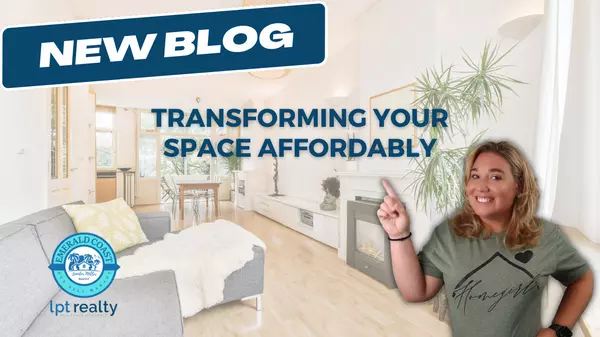Challenges and Tips for Buying a Home
Challenges and Tips for Buying a Home
Do you want to know the challenges and obstacles of buying a home? Dive into this comprehensive guide and discover five key tips that will illuminate your path.
Introduction to Home Buying Challenges Buying a home is, for many, a dream come true. It symbolizes stability, achievement, and a place to call one's own. However, the journey to homeownership is paved with challenges, both anticipated and unforeseen. This article aims to shed light on these challenges and offer expert advice on navigating them.
Do you Want to know the challenges and obstacles of buying a home? Listen to these 5 key tips! Home buying is a multifaceted process. From financial considerations to emotional rollercoasters, here are five key tips to guide you:
Understanding the Financial Implications Home buying is a significant financial commitment. It's crucial to assess your financial health, understand mortgage intricacies, and be prepared for unforeseen expenses.
Recognizing the Importance of Location They say in real estate, it's all about "location, location, location." A prime location can significantly impact your home's value and your quality of life.
The Role of Real Estate Agents A knowledgeable agent can be your ally, guiding you through property searches, negotiations, and paperwork.
The Hidden Costs of Home Buying Beyond the listing price, there are closing costs, maintenance expenses, and potential property tax hikes to consider.
Preparing for the Unexpected The home buying process can be unpredictable. From bidding wars to last-minute loan issues, it's essential to stay flexible and resilient.
The Emotional Rollercoaster of Home Buying Home buying isn't just a financial endeavor; it's an emotional journey. Celebrating the highs and navigating the lows is all part of the process.
Financial Challenges in Home Buying A sound financial strategy is the backbone of a successful home purchase. This includes saving diligently, understanding the nuances of mortgages, and being aware of how credit scores can impact loan approvals.
Legal and Technical Challenges Legalities can be daunting. Ensuring you're well-versed in property laws and the importance of thorough home inspections can save you from potential pitfalls.
Overcoming Obstacles: Tips and Strategies With the right strategies and a proactive approach, you can overcome many of the challenges that come your way during the home buying process.
FAQs
Why is location so crucial in home buying? Location affects property value, accessibility, and lifestyle. A good location can offer convenience, safety, and a sense of community.
How can I prepare for unexpected costs? Always have an emergency fund and do thorough research to anticipate potential expenses.
What role does a real estate agent play in the process? Agents offer market insights, negotiation skills, and can streamline the buying process.
How can I improve my chances of getting a mortgage? Maintain a good credit score, save for a substantial down payment, and seek pre-approval.
Are there any benefits to buying a home in a buyer's market? A buyer's market often means lower property prices and more room for negotiation.
What should I look for during a home inspection? Check for structural integrity, potential pest issues, and the condition of essential systems like plumbing and electrical.
Conclusion: Embracing the Home Buying Journey While the path to homeownership can be challenging, it's also immensely rewarding. With the right knowledge and a positive mindset, you can navigate the obstacles and make your dream home a reality.
Decorating on a Renter's Budget: Transforming Your Space Affordably
Decorating your rental space doesn't have to be a daunting or expensive task. With the right approach, you can turn your apartment into a cozy, stylish oasis without straining your budget. In this comprehensive guide, we'll explore innovative ways to spruce up your living quarters, all while keeping your finances in check.
Introduction
Renting a home often comes with limitations on the changes you can make to the space. However, this doesn't mean you have to settle for a bland or uninspiring environment. Decorating on a renter's budget requires creativity, resourcefulness, and a dash of inspiration. In this article, we'll delve into the art of transforming your rental space affordably and efficiently. From furniture hacks to DIY decor projects, we've got you covered.
Decorating on a Renter's Budget: Where to Begin?
Start with a Vision
Begin your decorating journey by envisioning the look and feel you want for your space. Creating a vision board with images, color swatches, and decor ideas can help you stay focused and inspired.
Declutter and Organize
Before diving into decoration, decluttering is essential. Get rid of items you no longer need or use. A clutter-free space not only looks better but also feels more inviting.
Assess Your Budget
Determine how much you're willing to spend on decorating. Having a clear budget in mind will guide your choices and prevent overspending.
Furniture Makeovers: Giving Life to Old Pieces
Paint It Up
A fresh coat of paint can work wonders for old furniture. Consider repainting chairs, tables, or cabinets to match your desired color scheme.
DIY Upholstery
Reupholstering worn-out chairs or sofas is a cost-effective way to breathe new life into your furniture. Choose fabrics that complement your decor.
Multifunctional Furniture
Invest in pieces that serve multiple purposes. Futons, storage ottomans, and convertible tables can maximize space and functionality.
Decorating on a Renter's Budget: Adding Personality
Gallery Wall
Create a gallery wall with your favorite artwork and photographs. This personalized touch adds character to your space.
Peel-and-Stick Wallpaper
Temporary wallpaper is a renter's best friend. It's easy to apply and remove, allowing you to experiment with various patterns and styles.
DIY Decor
Embrace your creativity with DIY decor projects. From handmade candles to customized throw pillows, the possibilities are endless.
Maximizing Space in Small Rentals
Vertical Storage
Utilize vertical space with wall-mounted shelves and hooks. This frees up floor space and keeps your belongings organized.
Mirrors
Mirrors can make a room feel larger and brighter. Strategically placing mirrors can visually expand your space.
Smart Furniture Arrangement
Arrange your furniture in a way that maximizes flow and functionality. Consider multifunctional pieces that save space.
FAQs
Q: How can I personalize my rental space without making permanent changes?
A: You can personalize your space with removable decor such as wall art, rugs, and temporary wallpaper.
Q: Are there budget-friendly options for updating my kitchen or bathroom?
A: Yes, you can update these spaces without major renovations by changing cabinet hardware, adding new fixtures, or using peel-and-stick tiles.
Q: What are some tips for choosing a color scheme?
A: Start with a neutral base and add pops of color with accessories like cushions, curtains, and artwork.
Q: Can I use plants for decoration in a rental?
A: Absolutely! Indoor plants can add freshness and vibrancy to your space. Choose low-maintenance varieties.
Q: How can I make a small rental space feel more open?
A: Use mirrors, light-colored paint, and strategically placed furniture to create the illusion of a larger space.
Q: Where can I find budget-friendly decor items?
A: Look for deals at thrift stores, online marketplaces, and consider DIY projects for unique decor.
Conclusion
Decorating on a renter's budget is a rewarding and creative endeavor. With the tips and ideas outlined in this guide, you can transform your rental space into a personalized sanctuary without breaking the bank. Remember, it's all about imagination, resourcefulness, and making the most of what you have. Happy decorating!
Pet Policies: How to Manage Furry Tenants
Owning a rental property can be rewarding, but when it comes to allowing pets, things can get a bit hairy. Many landlords find themselves on the fence about whether to welcome furry tenants or stick to a no-pets policy. The truth is, allowing pets can attract responsible and loving tenants, but it also requires careful planning and consideration. In this post, we'll delve into the world of pet policies, offering insights on how to effectively manage furry tenants while maintaining the integrity of your property.
Setting Clear Pet Policies
One of the first steps in managing furry tenants is to establish well-defined pet policies. Begin by determining the types and sizes of pets you're comfortable allowing. Consider setting limits on the number of pets per tenant to prevent overcrowding. These policies should be clearly outlined in the lease agreement, leaving no room for ambiguity.
Pet Deposits and Fees
Protect your property from potential pet-related damages by charging a reasonable pet deposit or non-refundable fee. This provides a financial cushion for any repairs or cleaning required after a tenant with pets moves out. Be transparent about these charges, and include them in your pet policy to set expectations from the start.
Tenant Responsibility
Educate your tenants about responsible pet ownership. Include clauses in your pet policy that emphasize the importance of cleanliness, noise control, and adherence to local leash laws. Responsible pet owners are more likely to be conscientious tenants, ensuring a harmonious living environment for everyone.
Regular Inspections
Routine inspections are essential when managing properties with pets. Schedule regular walkthroughs to assess any pet-related wear and tear on your property. Addressing minor issues promptly can prevent them from escalating into larger, more expensive problems down the line.
FAQs About Pet Policies
Q1: Can I implement a no-pets policy?
A1: Yes, as a landlord, you have the right to establish a no-pets policy. However, consider the potential benefits of allowing responsible pet owners as tenants.
Q2: How do I ensure tenants adhere to pet policies?
A2: Regular communication is key. Send reminders about pet policies and conduct occasional check-ins to address any concerns.
Q3: Can I charge different pet fees based on the type of pet?
A3: While it's legal to charge higher fees for larger pets that may pose more risk, ensure your fees are reasonable and comply with local regulations.
Conclusion
Managing furry tenants can be a win-win situation for both landlords and pet owners. By implementing clear pet policies, charging appropriate fees, and fostering responsible pet ownership, you can create a harmonious rental environment that benefits everyone. Remember, open communication and flexibility are crucial in successfully navigating the world of pet-friendly rentals. So, go ahead and welcome those furry friends – it might just be the purr-fect decision for your rental business!
The Ultimate Tenant Screening Checklist
Finding the right tenants for your rental property is crucial for a hassle-free and profitable experience as a landlord. To ensure you select responsible and reliable tenants, follow our comprehensive tenant screening checklist. By taking these steps, you can minimize potential issues and create a positive renting environment
Application Process
Rental Application: Require all potential tenants to fill out a detailed rental application. This should include personal information, rental history, employment details, and references.
Application Fee: Collect a reasonable application fee to cover the cost of background and credit checks. This helps filter serious applicants.
Credit and Financial Checks
Credit Report: Obtain written consent to run a credit check. Look for a history of responsible financial behavior and prompt bill payments.
Income Verification: Ensure tenants have a stable income that's sufficient to cover rent. Generally, a monthly income of at least three times the rent is a good benchmark.
Rental History
Past Rental References: Contact previous landlords to inquire about the tenant's rental history. Ask about their punctuality in rent payments and their behavior as renters.
Eviction History: Check for any past evictions. This indicates potential issues with paying rent or adhering to lease agreements.
Employment Verification
Employment Details: Confirm the tenant's current employment status and stability. A consistent job history bodes well for reliability in rent payment.
Contact Employer: With the tenant's consent, contact their employer to verify their employment and income details.
Criminal Background Check
Criminal Record: Conduct a criminal background check to ensure the safety of your property and other tenants. Be mindful of relevant laws and regulations.
Rental Interview
Meet in Person: Arrange a meeting to discuss expectations and clarify any doubts. This can provide valuable insights into the tenant's personality and communication skills.
Pet and Smoking Policies
Pet Policy: Clearly define your stance on pets. If you allow pets, specify the type, size, and any associated fees.
Smoking Policy: State whether smoking is allowed or not. Many landlords prefer smoke-free tenants due to potential damage and health concerns.
Lease Agreement
Detailed Lease: Prepare a comprehensive lease agreement outlining terms and conditions, rent due date, security deposit details, and maintenance responsibilities.
Legal Review: Consult legal counsel to ensure your lease agreement adheres to local laws and regulations.
Security Deposit
Security Deposit: Set a reasonable security deposit to cover potential damages. Clearly define conditions for withholding or returning the deposit.
Conclusion
By diligently following this tenant screening checklist, you can minimize the risk of problematic tenants and create a positive rental experience for both parties. Finding responsible and reliable tenants is a key step in maintaining the value of your property and ensuring long-term success as a landlord. For a seamless and stress-free rental journey, make sure to prioritize thorough tenant screening.

Jennifer Miller
Phone:+1(850) 490-5744




